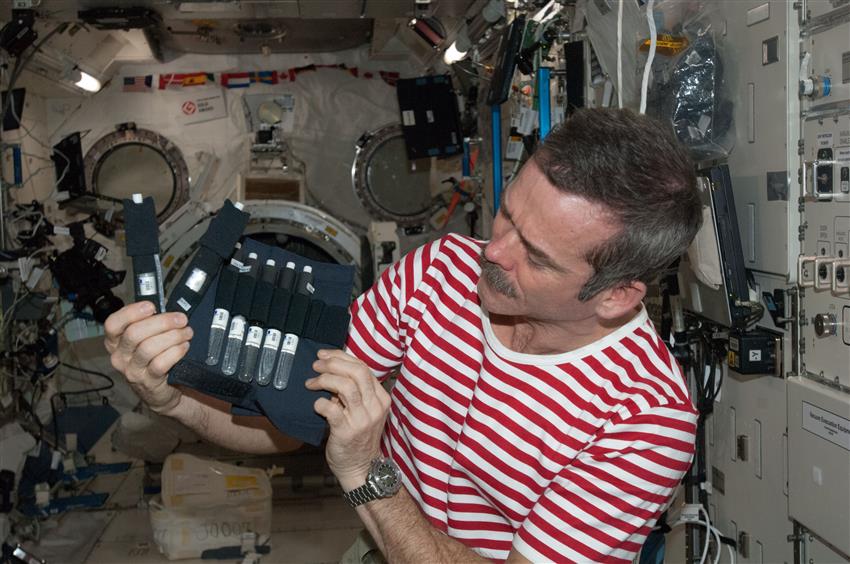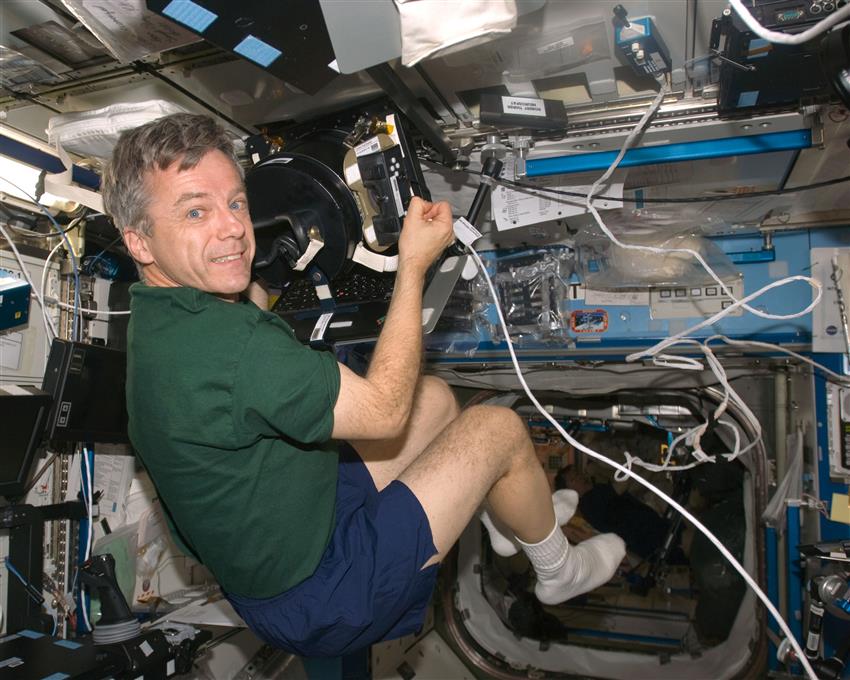Scientific experiments
In space
Astronauts conduct many scientific experiments on board the International Space Station (ISS). This is one of their main tasks. Conducting these experiments is very time-consuming, since they must be carefully documented.
Experiments in orbit help us gain a better understanding of the effects of weightlessness on various living things and materials:
-

The human body
-

Living organisms
-

Plants
-

Fluid physics
-

Technology
-

Various materials
What is the purpose of science in orbit?
As former Canadian astronaut Chris Hadfield said during Expedition 34/35, astronauts are a little like "extreme" lab technicians!

Canadian astronaut Chris Hadfield holding the neutron bubble detectors sent to the ISS as part of the Canadian Radi-N2 experiment on radiation. (Credit: NASA)
Their experiments make it possible to:
- observe certain phenomena and use the data obtained to develop new medical, pharmaceutical and industrial applications
- gain a better understanding of certain issues that directly affect us on Earth
- improve the quality of life on Earth
Did you know that taking pictures of Earth is a designated part of the scientific work on board the ISS? This makes it possible to:
- monitor the impacts of climate change
- track urban sprawl
- photograph major events like volcanic eruptions and hurricanes
Canada's priority: the health sciences
The health sciences are the main focus of the Canadian scientific experiments.
The spinoffs in this field have concrete impacts on the lives of Canadians, particularly the elderly and people living in remote areas.
Canadian astronauts in the service of science
During Chris Hadfield's last mission, he and the crew conducted 130 scientific experiments on board the ISS on behalf of Canadian and foreign scientists. They were tasked with preparing and managing these experiments.

Canadian astronaut Robert Thirsk participating in the Bodies in the Space Environment (BISE) experiment. The aim of this Canadian experiment is to study how astronauts distinguish up from down in microgravity. (Credit: NASA)
Former Canadian astronaut Robert Thirsk also participated in scientific experiments on board the ISS. During Expedition 20/21, he served as a guinea pig for the experiment entitled BISE.
Learn more about the concrete impacts of space science on your daily life!